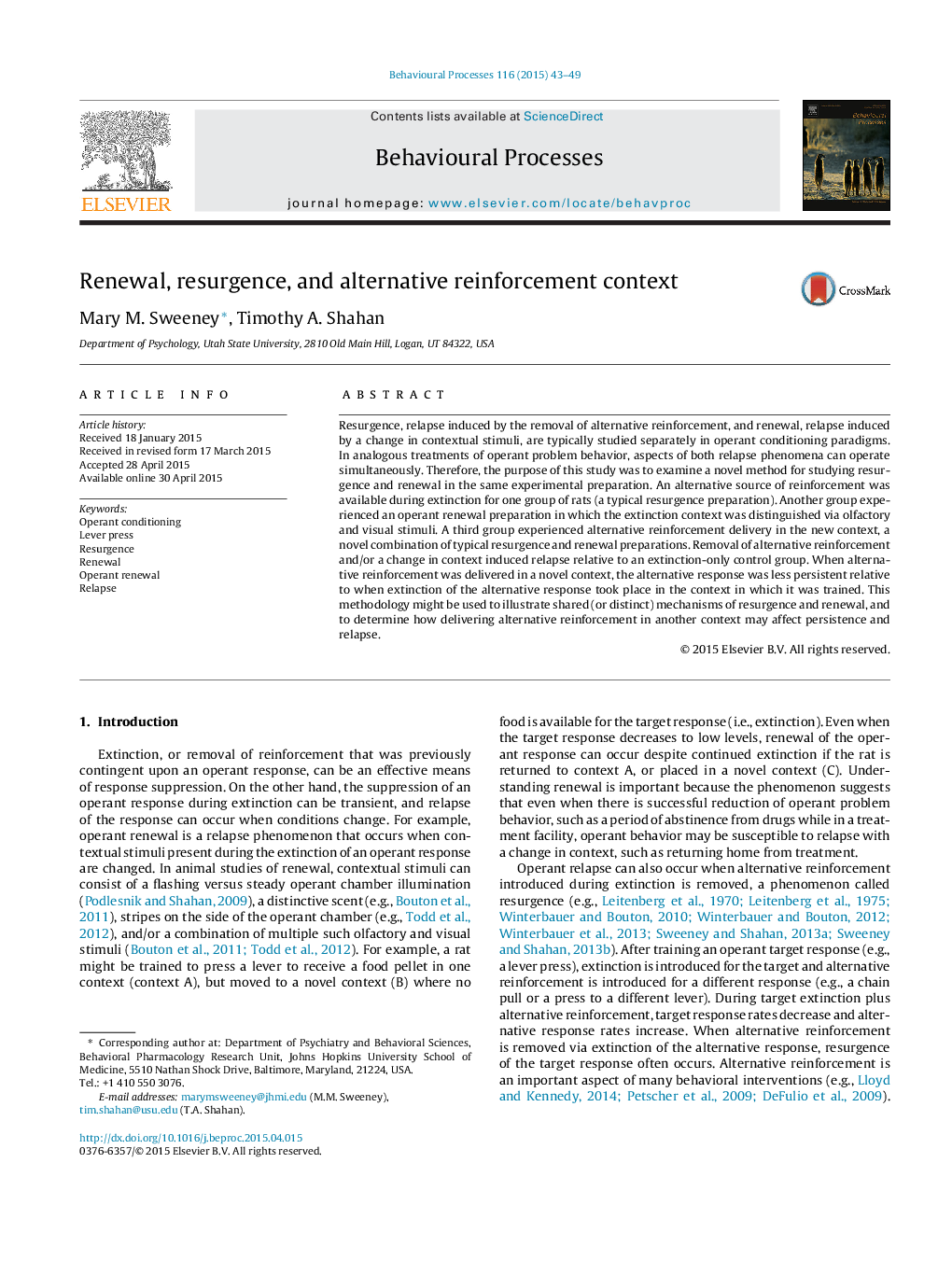| کد مقاله | کد نشریه | سال انتشار | مقاله انگلیسی | نسخه تمام متن |
|---|---|---|---|---|
| 2426537 | 1553164 | 2015 | 7 صفحه PDF | دانلود رایگان |
• In this study, we examined resurgence, renewal, and an extinction-only control group.
• Another group experienced alternative reinforcement delivery in a novel context.
• Relapse occurred when alternative reinforcement was removed and/or context changed.
• Alternative responses were less persistent when extinguished in a different context.
• Similar methodology may align or distinguish mechanisms of renewal and resurgence.
Resurgence, relapse induced by the removal of alternative reinforcement, and renewal, relapse induced by a change in contextual stimuli, are typically studied separately in operant conditioning paradigms. In analogous treatments of operant problem behavior, aspects of both relapse phenomena can operate simultaneously. Therefore, the purpose of this study was to examine a novel method for studying resurgence and renewal in the same experimental preparation. An alternative source of reinforcement was available during extinction for one group of rats (a typical resurgence preparation). Another group experienced an operant renewal preparation in which the extinction context was distinguished via olfactory and visual stimuli. A third group experienced alternative reinforcement delivery in the new context, a novel combination of typical resurgence and renewal preparations. Removal of alternative reinforcement and/or a change in context induced relapse relative to an extinction-only control group. When alternative reinforcement was delivered in a novel context, the alternative response was less persistent relative to when extinction of the alternative response took place in the context in which it was trained. This methodology might be used to illustrate shared (or distinct) mechanisms of resurgence and renewal, and to determine how delivering alternative reinforcement in another context may affect persistence and relapse.
Journal: Behavioural Processes - Volume 116, July 2015, Pages 43–49
